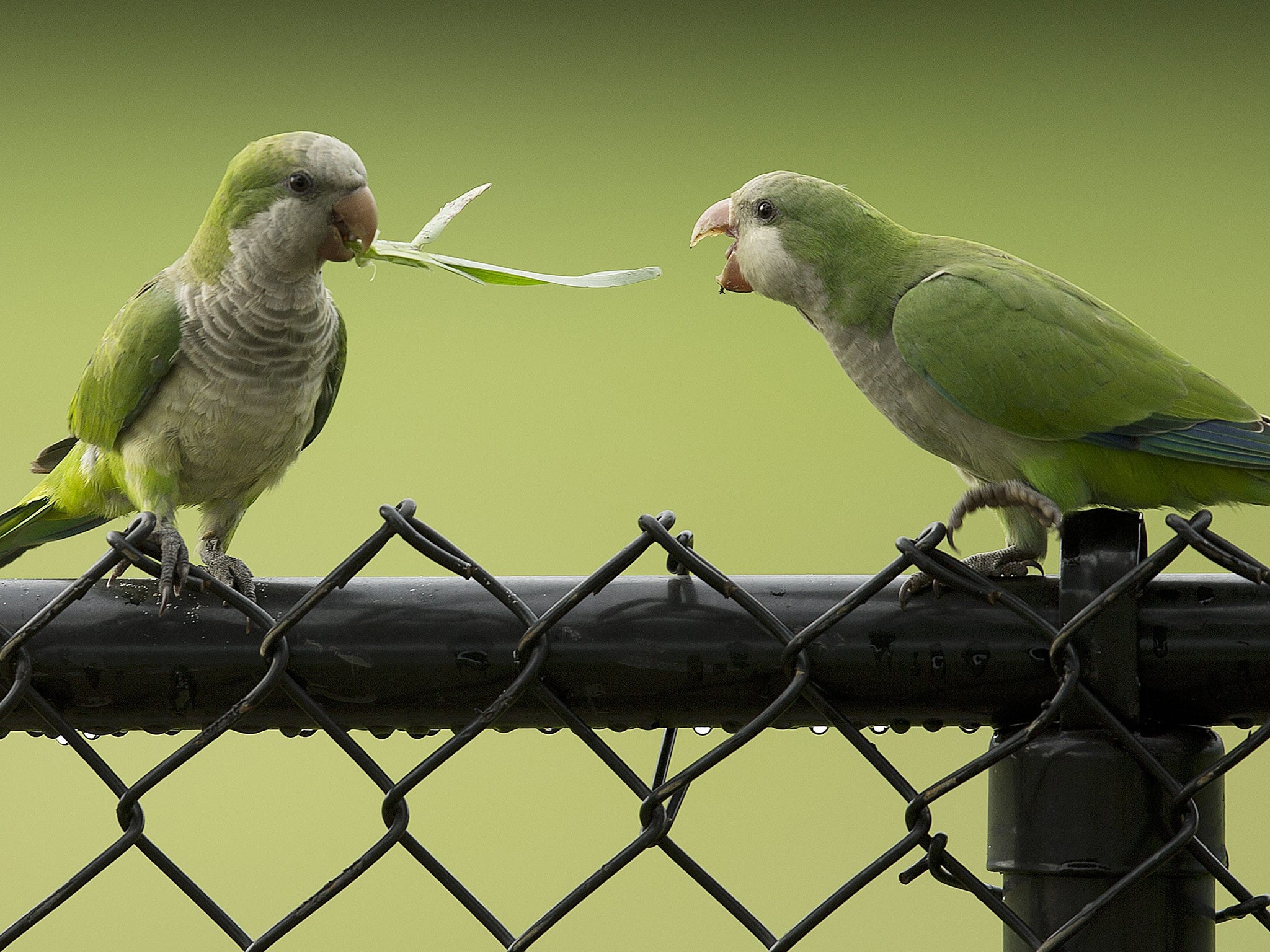There’s no morality in nature – animals do what comes naturally
Nature Studies: We should stand back a little, and pause before judging

I had an unusual wildlife experience last week which made me think about pests – I mean, the idea of what is a pest, and what isn’t.
It concerned parakeets and rats, and it took place at Kew Gardens, which is not just a botanical treasure house, but an unofficial nature reserve with a surprising amount of wildlife on view, especially in the bluebell wood near Queen Charlotte’s Cottage.
In spring, the bluebells are an unforgettable sight, but in winter, with no leaves on the trees, it is the birds that catch the eye, especially from a path running right through the wood’s heart, where at one point half a dozen bird feeders hang from a tree at the edge of a glade.
There is a bench opposite them, and if you sit on it quietly, the birds will carry on feeding three or four yards away from you; bring bread or seed yourself, and the blue tits and great tits will occasionally come to your hand. We have known it as a family for years, since our children were small, and I often return to it; but when I got there last Friday, what I found was a takeover.
There were no fewer than 14 ring-necked parakeets, brilliant green with their striking crimson bills, hogging the feeders, having driven off all the small songbirds, which were hovering in the background. It was a striking scene, like something from the rainforest, but it also set up a sense of irritation in me – due to the parakeets’ piratical behaviour.
The birds have exploded in numbers in south London and Surrey in recent decades, though no one knows how they became established in Britain. They have often been regarded as an immensely colourful addition to our avifauna, but in their home range, across Africa and Asia, they are widely regarded as a pest of crops and orchards; and in 2009 the British government put them on its official pest list – it added the birds to the “general licence” of species which can be culled without individual permission, if damage is being done.
I have always sided with the colourful-addition argument rather than the pest one, but last week, I have to say, my irritation made me swing pest-wards. Yet the parakeets weren’t the only wildlife present. On the ground beneath the feeders was a small group of brown rats, hoovering up the spilt birdseed.
Rats! Your reaction may well be: ugh! If we’re talking pests, here’s your species – disease-carrying devils from the sewers! But I have known of this colony for a long time and enjoy quietly watching them, since the fact that they are domiciled in a woodland glade of nettles and brambles rather than down in the drains, somehow seems to take away, for me, a lot of their sewer associations.
And I enjoyed watching them last Friday, along with the returning songbirds, as my arrival had scared away most of the parakeets, and their smaller cousins came back to the feeders – blue tits and great tits and a few of the less common coal tits, plus a robin; then a couple of nuthatches, with their chestnut bellies standing out against the black branches.
A jay flew past, carrying an acorn, resplendent in cinnamon-pink and blue. A great-spotted woodpecker swooped down with a flash of scarlet to the peanut feeder. It was quite a wildlife display, and the brown rats quietly nibbling the spilt seeds underneath seemed very much part of it, until it was rudely interrupted.
A fox, a big, magnificent, superbly coloured animal, suddenly bounded out of the glade-edge foliage no more than 15 feet away from me, seized one of the rats in its jaws in a swift sideways swing of its head – a sort of flourish – and leapt back into the undergrowth.
The other rats vanished. The birds momentarily stopped feeding and flew up into the treetops. I was taken aback myself. But as I reflected on it, I thought that the incident had, strangely, made the rats seem even more like a legitimate part of our wildlife, rather than sewer pests – for to be the prey of a wild fox somehow put them alongside rabbits and field mice and voles as natural denizens of the countryside.
Whereas the parakeets, shrieking and screaming, pushing all the other birds around, seemed more pest-like than ever.
And then I further reflected on something else: both rats and parakeets were just doing what comes naturally, and the attribution to them of moral status, good or bad, was all in my mind.
For we are very free with our moralising, our snap judgements, on the natural world, are we not? Bumblebees good, wasps bad; lions noble, hyenas depraved; primroses flowers, dandelions weeds.
We should stand back a little, and pause before judging. Hamlet understood: “There is nothing either good or bad,” he told Rosencrantz and Guildenstern, “but thinking makes it so.”

Join our commenting forum
Join thought-provoking conversations, follow other Independent readers and see their replies